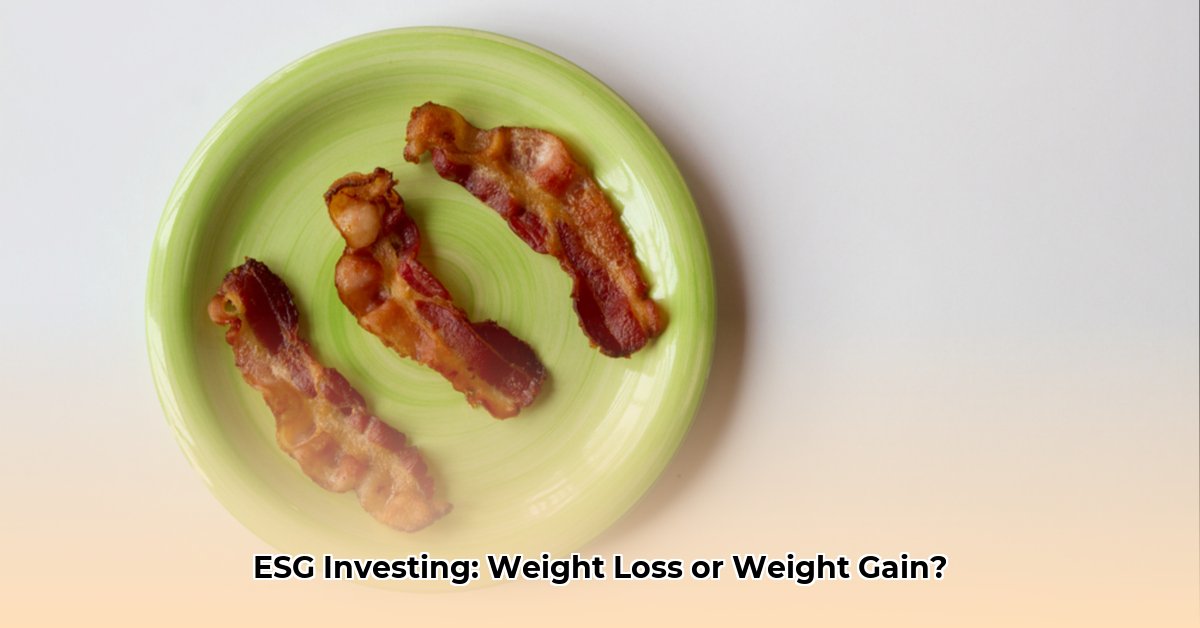
Endoscopic sleeve gastroplasty (ESG) is a minimally invasive weight-loss procedure gaining popularity. However, understanding its advantages and disadvantages is crucial before considering it. This review provides a comprehensive overview, examining both short-term and long-term effects.
Understanding Endoscopic Sleeve Gastroplasty (ESG)
ESG uses an endoscope (a thin, flexible tube with a camera) to reshape the stomach from within, reducing its capacity. This less invasive approach compared to traditional bariatric surgery offers several benefits, but it's essential to have realistic expectations. It's not a standalone solution; lasting weight loss requires significant lifestyle changes.
ESG Weight Loss: Advantages
- Significant Weight Loss: Studies demonstrate substantial weight loss and reductions in BMI and waist circumference within the first year. This initial success provides strong motivation. However, the rate of weight loss varies considerably between individuals. Is this initial rapid weight loss sustainable in the long term?
- Faster Recovery: Unlike traditional surgery, ESG typically involves a shorter recovery period, allowing patients to return to normal activities within days. This shorter recovery time is a significant advantage for busy individuals.
- Metabolic Improvements: ESG may positively impact metabolic factors, potentially improving blood sugar control, energy levels, and overall well-being. This has the potential to positively affect related health conditions. How long do these metabolic benefits persist post-procedure?
- Reversibility (to an extent): In most cases, ESG can be reversed, offering flexibility if results aren't as hoped for or if circumstances change. This reversibility provides a degree of control. However, the reversal process itself carries risks and should be discussed extensively with your surgeon.
ESG Weight Loss: Disadvantages
- Long-Term Data Limitations: Because ESG is a relatively new procedure, long-term data on its effectiveness and sustainability are limited. This uncertainty makes long-term projections difficult and highlights the need for continued research.
- Cost and Insurance Coverage: ESG can be expensive, and insurance coverage often varies. This financial barrier limits accessibility for many potential candidates. How can patients navigate the financial challenges associated with ESG?
- Risk of Disordered Eating: While uncommon, some individuals may experience the development or worsening of disordered eating patterns. This emphasizes the importance of robust psychological support before and after the procedure.
- Potential for Weight Regain: Although many maintain weight loss, some experience weight regain. This highlights the absolute necessity of adhering to long-term lifestyle changes, including diet and exercise. Maintaining a healthy lifestyle is paramount for long-term success.
Making Informed Decisions: Key Questions to Ask
Before considering ESG, carefully consider these factors:
| Factor | Important Considerations |
|---|---|
| Short-Term vs. Long-Term | While initial weight loss is often substantial, the long-term efficacy requires ongoing evaluation and research. |
| Cost and Insurance | Explore all financing options and confirm insurance coverage before proceeding. |
| Psychological Preparedness | Honest assessment of mental and emotional health is crucial; ongoing psychological support is highly recommended. |
| Lifestyle Changes | Are you prepared to commit to a consistent healthy lifestyle, including diet and exercise, long-term? |
Maintaining Long-Term Weight Loss After ESG
Long-term success after ESG depends heavily on lifestyle modifications. This isn't merely about dieting; it's about adopting sustainable lifestyle changes.
A Step-by-Step Guide to Long-Term Weight Management After ESG:
- Pre-operative Consultation: Thorough discussions with your doctor to establish realistic goals, understand potential complications, and create a comprehensive plan.
- Dietary Changes: Adopt a balanced nutritional plan focusing on whole foods, portion control, and regular meal timing.
- Physical Activity: Incorporate at least 150 minutes of moderate-intensity exercise per week.
- Support System: Utilize support groups, registered dietitians, or therapists for ongoing guidance and encouragement.
- Post-operative Follow-up: Attend all scheduled appointments for monitoring and support.
Conclusion
ESG offers a potentially effective weight-loss solution for suitable candidates. However, it's crucial to approach it with realistic expectations, acknowledging both the advantages and disadvantages. Long-term success is undeniably linked to adopting and maintaining a healthy lifestyle. Thorough consultation with a healthcare provider is essential to determine if ESG is the right choice for your individual needs and circumstances. Furthermore, continuous research will provide more comprehensive long-term data on ESG’s efficacy.